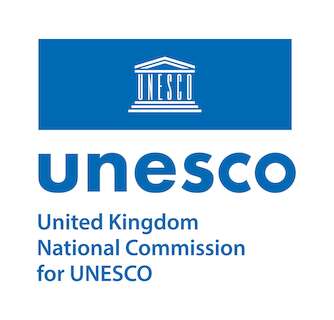‘Local to Global’, made possible with The National Lottery Heritage Fund thanks to National Lottery players, aims to develop a resilient network for UNESCO Designated Sites in the UK.
The project has got off to a fantastic start since its launch last month, and we are very excited to announce that thanks to some additional funding secured from the UK Government’s GREAT campaign, we have the opportunity to work with the talented Birmingham-based designer Tom Woolley to create a new illustrated map of the UK’s UNESCO designated sites. Tom will develop the map by generating an illustrated asset of each site, accompanied by an index containing short written descriptions and a photograph of each site. The map will be used to promote the UK’s UNESCO network to national and international tourists and you can find out more about it at our first online event on Wednesday 5th April.
Selecting the pilot sites
Over the next 18 months we will be working with three pilot sites to conduct intensive stakeholder mapping exercises, develop tailored audience development plans, test new ideas with their community and help to shape their own fundraising strategies. The case studies examining the pilot sites will go towards building a business case for future investment into a fully realised UK UNESCO Network.
The Local to Global team took a strategic approach in identifying which designations would be chosen as pilot sites, taking into account geographic, sustainability and socio-economic factors. The project agreement had already identified that the sites would consist of one World Heritage Site, one Global Geopark and one Biosphere Reserve.
One important aspect was a good geographic spread, and we were keen to identify sites across the four nations of the UK, albeit we were limited to three sites. We also looked at which designations were in local authority areas designated as Category 1 (the highest level of identified need) for the UK Government’s Levelling Up agenda. We wanted a good cross section of urban, rural and coastal landscapes, and for sites that represented the history of different eras. It was important to take all these factors into account, while also ensuring that the chosen designations had partnerships that are ready to clearly demonstrate the impact of the Local to Global project.
Announcing the Pilot Sites
We are now very excited to announce that the three pilot sites who have agreed to be part of the Local to Global project are:
Antonine Wall – this coast-to-coast and once formidable barrier has been part of the Frontiers of the Roman Empire UNESCO World Heritage Site since 2008. It once formed a fortified wall across the lowlands of Scotland, running from the Firth of Forth to the Firth of Clyde. Built around AD 142 but abandoned after only twenty years, the wall has left its mark on Scotland’s landscape with steep ditches and the remains of ramparts, forts and bathhouses all waiting to be explored.
Biosffer Dyfi Biosphere – awarded UNESCO biosphere status in 2009, this valley and surrounding area in Mid Wales has a rich variety of landscapes from high peat moorland, wide estuary, sand dunes and beaches, broadleaved woodland, coniferous forest, farmland, saltmarsh and lowland peat bog, all creating a haven for wildlife.
Black Country Global Geopark – The UK’s most recent Global Geopark, receiving its UNESCO status in 2020, the Black Country played a major role in the industrial revolution. Being rich in minerals such as limestone, ironstone, fireclay and coal (the ingredients to make iron), this paved the way for the Black Country to become the world’s first large industrial area. Today the geology and industrial heritage go hand in hand with wildlife and nature.
In our next blog we will tell you a bit more about these 3 designations and the start of their journey as pilot sites in the ‘Local to Global’ project.
All other UNESCO designations across the UK will ultimately benefit from the work carried out with the pilot sites, through shared learning, case studies and toolkits. We will also be researching best practice across the network, identifying exemplars and creating wider networking opportunities.
Exemplar sites
We are starting to identify projects from across the network of World Heritage Sites, Global Geoparks and Biosphere Reserves that are exemplars in audience development, stakeholder mapping, fundraising and digital transformation. Exemplar projects will be worked up into case studies that will be used for sharing best practice and learning across the UNESCO UK network. If you have good examples in any of these areas please let us know so that we can include you in our research.







